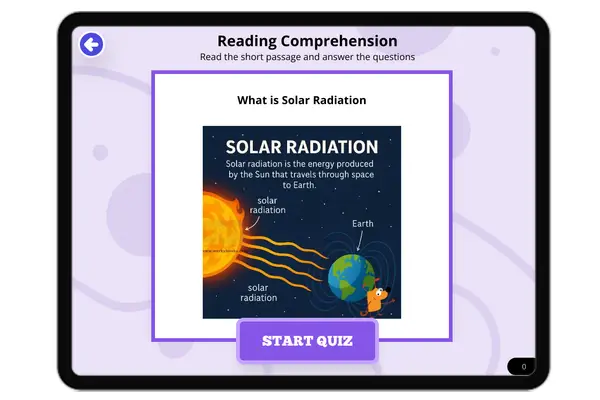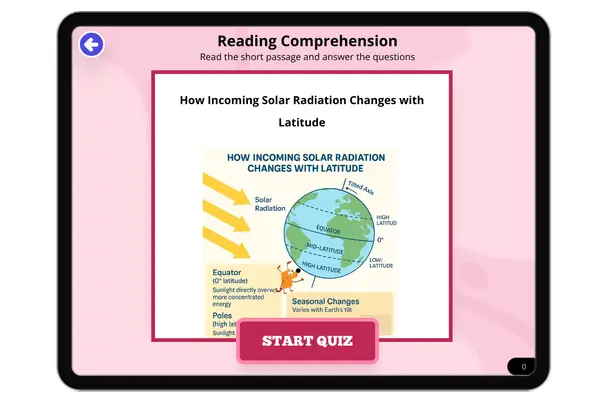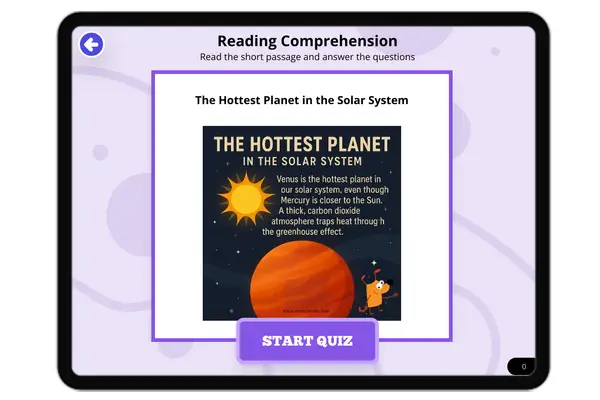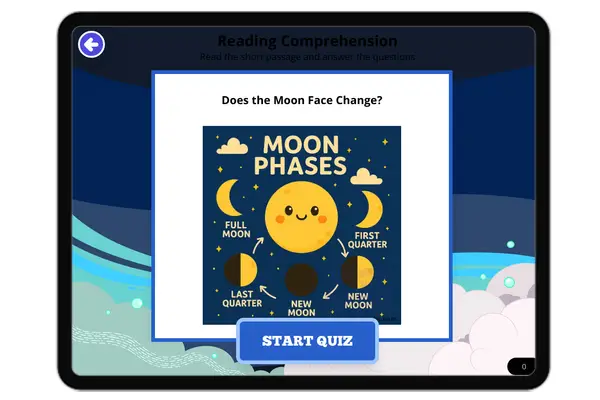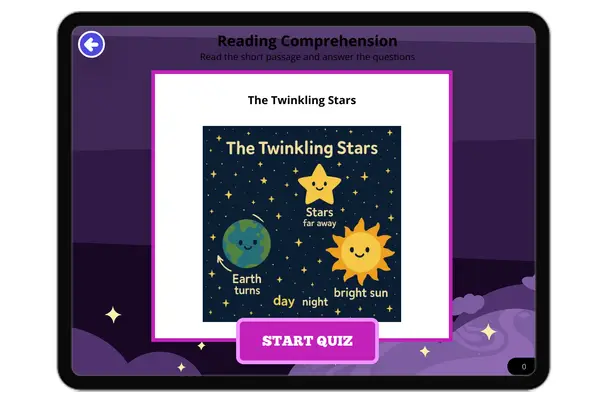The Milky Way - Our Galactic Home
The Milky Way is a massive spiral galaxy containing billions of stars, including our Sun. It features a central bulge, s...
RI.4.4RI.4.2
Andromeda - Our Galactic Neighbor
Andromeda, also known as Messier 31, is a massive spiral galaxy with about one trillion stars, located 2.5 million light...
RI.4.4RI.4.2
What is Solar Radiation
This NGSS-aligned science reading passage for middle school students explores the concept of solar radiation. Solar radi...
MS-ESS1-1
How Incoming Solar Radiation Changes with Latitude
This NGSS-aligned science reading passage helps middle school students understand how solar radiation, or insolation, ch...
MS-ESS1-1
The Hottest Planet in the Solar System
This NGSS-aligned middle school reading passage explains why Venus is the hottest planet in our solar system. Students l...
MS-ESS1-3
Patterns In The Sky
This engaging 1st-grade reading comprehension passage, 'Being a Sky Observer,' directly aligns with NGSS Standard 1-ESS1...
1-ESS1-1
Earth's Place in the Universe
This reading passage explains Earth's place in the universe, supporting NGSS 1-ESS1-1. It describes how Earth is one of ...
1-ESS1-1
When Was Neptune Discovered?
This reading passage explains how Neptune, the eighth planet from the Sun, was discovered in 1846 by astronomers Johann ...
1-ESS1-1
The Diameter of Earth
This science reading passage explains the diameter of Earth, describing it as about 12,742 kilometers or 7,918 miles acr...
5-PS2-1
Sun, Moon, and Stars
This engaging 1st-grade reading comprehension passage, 'The Sun, Moon, and Stars,' is perfectly aligned with NGSS Standa...
1-ESS1-1
Does the Moon Face Change?
This engaging 1st-grade reading comprehension passage, 'The Moon's Changing Face,' is specifically designed to align wit...
1-ESS1-1






